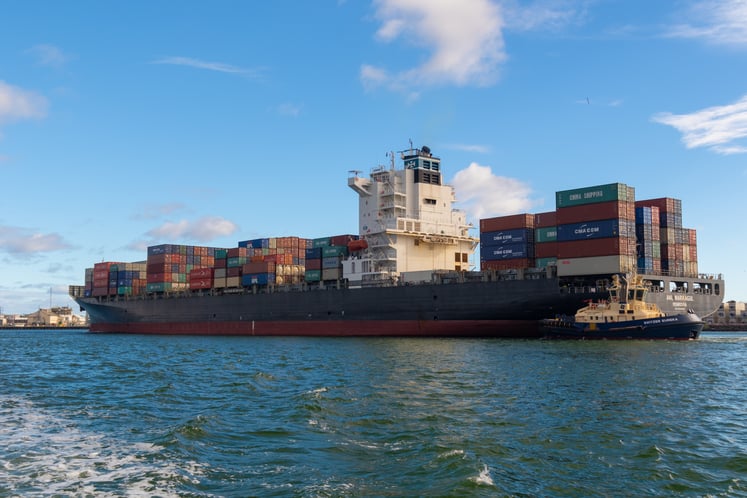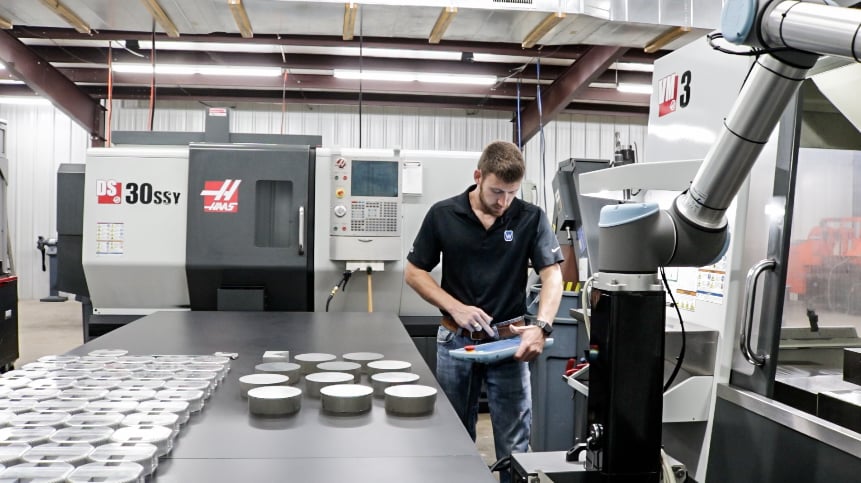How to Overcome Supply Chain Disruptions with Robots

Global supply chains have been upturned in the last few years. Supply chain disruptions are now more common than ever.
Robots offer an efficient solution to overcoming those disruptions. They can help you to reduce the complexity of your supply chain and improve its robustness.
What type of supply chain disruptions can robots help with?
And how can you quickly deploy robotic automation to your operations?
With the right approach, a robot can be a valuable tool.
What is supply chain disruption?
Supply chain disruption means any disturbance in a supply chain that interrupts a company's normal operations. As a supply chain is a network between a company and its suppliers, disruptions to this chain mean that the company cannot produce its products at the usual rate.
There are many potential causes of supply chain disruption in the modern world.
Some disruptions are simple to overcome. For example, a local supplier of stainless steel goes out of business and you have to switch to another local supplier.
Other disruptions are more difficult to tackle. For example, geopolitical tensions between your home country and the country where you manufacture some parts make it increasingly difficult to source your parts and there are no suitable local providers.
6 categories of supply chain disruptions
According to supply chain management experts, there are 6 categories of vulnerability that can cause supply chain disruptions:
- Cyber and security vulnerabilities
- Financial and company viability
- Geopolitical situations
- Man-made problems
- Natural disasters
- Reputational and compliance issues
Supply chain disruption examples you might face now
Right now, there are probably more causes of supply chain disruption than there have been for decades.
The Covid-19 pandemic brought supply chains to their knees, the continued growth of container ship sizes means that incidents like the Suez Canal obstruction in 2021 will likely happen more often, and the rising demand for online goods is only exacerbating the problematic situation.
Here are some examples of supply chain disruptions that you might experience now:
Trade barriers
Geopolitical situations are constantly changing, though it feels like they have been changing even more rapidly than usual recently.
Situations like the UK's exit from the European Union (Brexit), the United States-Mexico-Canada Agreement (USMCA), and changing import taxes can hit supply chains hard.
Logistic breakdowns
The Suez Canal obstruction in 2021 took the whole world by surprise as this vital trade route ground to a halt for a whole week. The situation held up an estimated $9.6 billion in trade.
According to commentators, this type of logistic breakdown is likely to become more common as containers ships continue to grow in size and more products are shipped internationally along busy trade routes.
Labor and transport costs
In the past, offshoring work to other countries made sense because the cost of labor was a lot cheaper. However, as the developing world has continued to develop, labor costs in those countries have also risen. The cost savings of the past are now less obvious than they used to be.
Another important cost to factor in is transport. Rising fuel prices mean that the further you ship your products and materials, the more you have to pay and fluctuations make those costs harder to predict.

High complexity chains
You source supplies from one country, you pre-assemble parts of your products in another country… the more complex your supply chain the more possibility for disruption.
When supply chains are running smoothly, having a complex chain isn't a problem as long as you manage it correctly. However, when supply chain disruptions are out of your control, the simpler your chain the more robust it can be.
Environmental incidents
Extreme weather, natural disasters, and changing environmental conditions can disrupt supply chains with little to no warning.
According to the United Nations, the rate of environmental issues is increasing. This means that impacts on supply chains will also continue to increase.
The robotic approach to managing disruption risks in supply chains
How can we use robots to manage supply chain disruptions?
In general, your supply chain is less prone to disruption when it is simpler and more local. This reduces the number of factors that could throw your business off course.
One reason that supply chains have become so complicated over the years is the cost benefit of outsourcing and offshoring. For most companies, it just didn't make financial sense to perform operations in their own facilities because it was cheaper in other countries.
Robots provide a reliable way to bring production back to your own facility without the high cost. There are many associated advantages to using robots in this way.

Back in 2019, we commented that the "offshoring bubble" hadn't exactly burst, but it was deflating. Thanks to the Covid-19 pandemic, it seems likely that the bubble has finally burst.
Robotic automation is now a more sensible approach for many companies than risking the viability of their supply chains by using offshoring.
How to deploy robots quickly to overcome supply chain disruption
If you are looking to add a robot to your operations, it makes sense to deploy it as efficiently as possible.
Traditionally, robot deployments took several months and could be quite disruptive in themselves. However, there is now a quicker way to get started with robotic automation.
Pre-designed robotic application kits come with all the accessories that you need to get up and running in as short a time as possible. It is now possible to deploy a robot to your process in a matter of hours, helping you respond to supply chain disruptions quickly.
Check out our applications page to find out more about application kits.
What task have you currently outsourced that could be done by a robot? Tell us in the comments below or join the discussion on LinkedIn, Twitter, Facebook, or the DoF professional robotics community.






Leave a comment